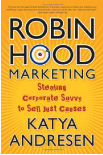Here’s a problem leaders face every day. You want to get something done. It will take everyone in your organization to do it.
How will you get them pulling in the same direction?
You could go around and have a heart-to-heart with each person in the organization. You could explain in detail the role each person should play and how they are supposed to do it.
That might work…if you have three people in your organization. In a larger group, you’d be spending a huge amount of time and you still wouldn’t know whether or not your people “get it” until you saw them in action.
You’d also be accused of “micro-management”—and your accusers would be right. Why tell other people how to do their jobs, which is something they might already know better than you do?
You don’t need to tell them how to do it. You need to make sure they know what needs to be done. And the best way to do that just might be through telling a story.
Find out how:
http://www.trippbraden.com/2015/03/13/who-is-the-hero-of-the-story/

